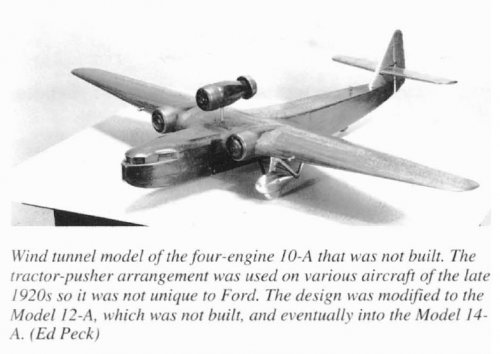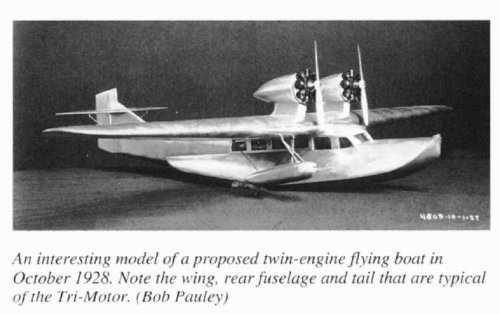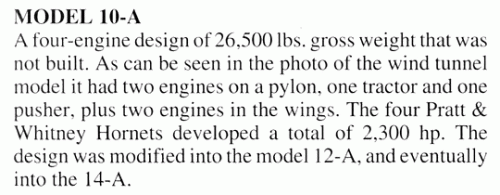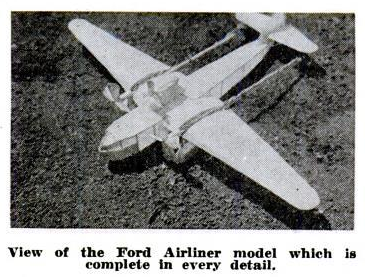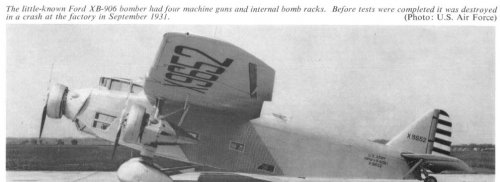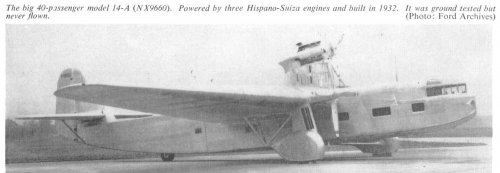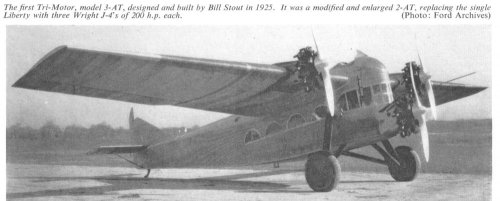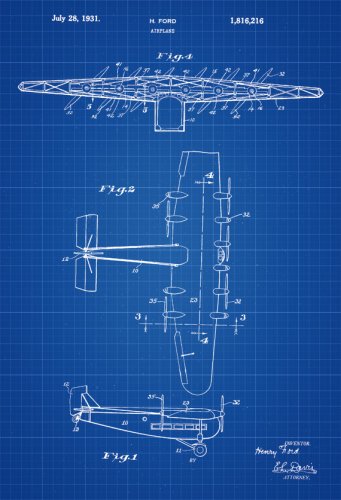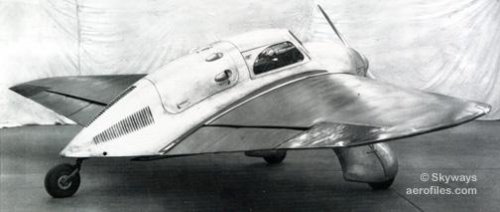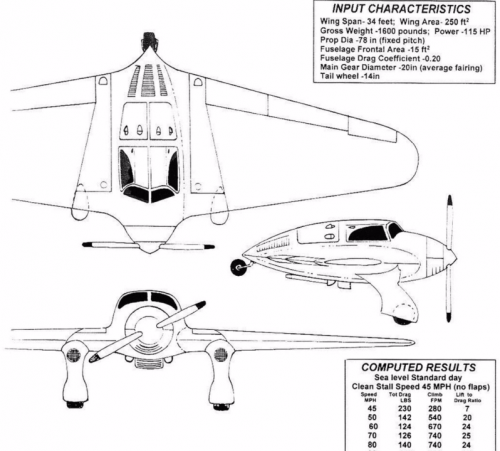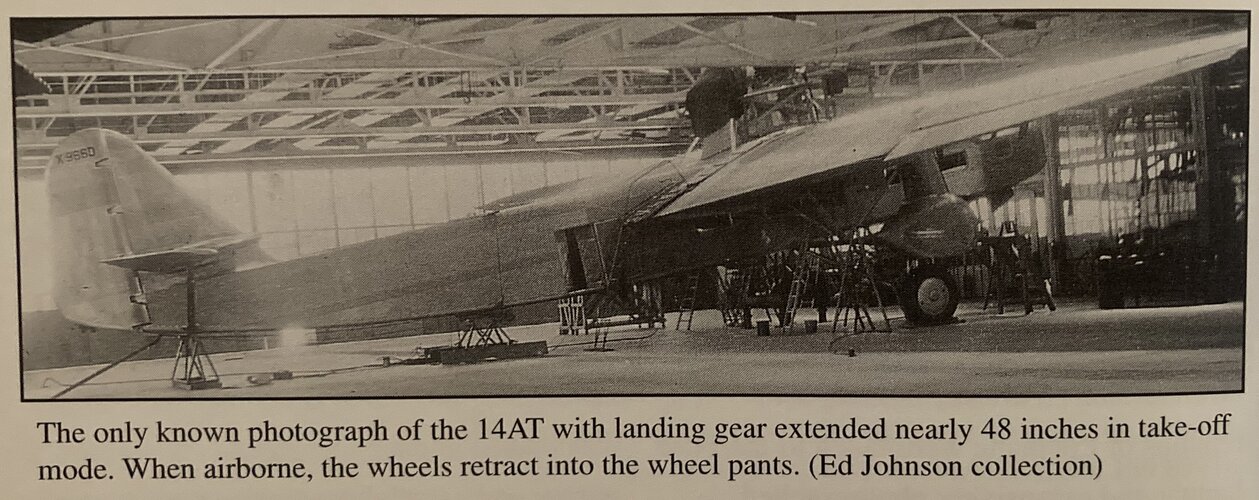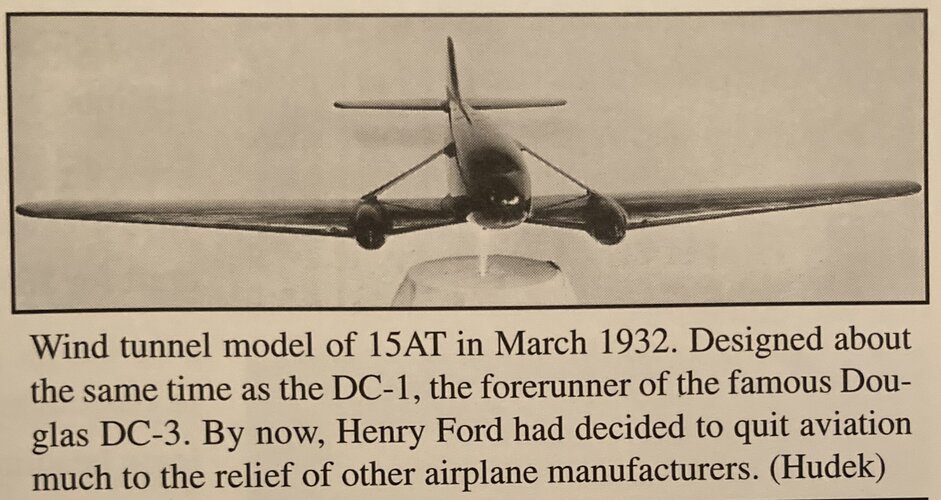List of Ford aircraft and a timeline of some Ford aeronautical developments.
Early Ford Aeronautical Developments
1909 The Ford-Van Auken 1909 Monoplane was the first of a series of aircraft built with and for the Ford Motor Company. Similar to the Bleriot design.
1924 Ford Airport was developed in Dearborn, Michigan. Dedicated in January 1925 it contained the Stout factory. Ford Air Transport Service between Dearborn and Chicago begins in 1925.
1925 Ford built the only private dirigible mooring mast in the US. It was a 284 ft mooring tower first used by airship RS-1 in 1926.
1926 Ford Fliver, single seat low wing with Anzani engine.
1927 Ford Fliver, single seat low wing with Ford engine.
1927 Two seat, twin engine amphibian designed by Bill Stout. Appears to be a tandem wing design with ventral vertical stabilizers.
1927 Five seat, single engine high wing monoplane built by Stout Metal Airplane Division of Ford Motor Co.
1928 Large twin engine amphibious seat plane design.
Single Engine Ford Airliner
2-AT Pullman
Stout's monoplane with a single 400 hp (300 kW) Liberty L-12 V-12 engine, developed into 3-AT. 11 Built.
Ford/Stout Trimotors
3-AT
Stout's tri-motor prototype with three 200 hp (150 kW) Wright J-4 Whirlwind radial engines. Outboard engines on wings, and nose engine mounted very low. One built. First trimotor built in the USA.
4-AT
Prototype with three 200 hp (150 kW) J-4 Whirlwinds, with outer engines below wings. Two pilots in open cockpit, and eight passengers given half-round windows. One built.
4-AT-A
Production enclosed-cockpit version with rectangular windows with top corners rounded. 14 built.
4-AT-B
4-AT-Bs with three 220 hp (160 kW) Wright J-5 Whirlwind radials. Carried 12 passengers. 39 built.
4-AT-C
4-AT-B with nose engine replaced by a 400 hp (300 kW) Pratt & Whitney R-1340 Wasp radial. One built.
4-AT-D
4-AT-Bs with lengthened 78 ft 0 in (23.77 m) wings and fitted with various engines and other minor modifications. One built and two modified.
4-AT-E
4-AT-Bs with three 300 hp (220 kW) Wright J-6-9 Whirlwind nine-cylinder radials. 24 built with rectangular windows as used on 5-AT-A.
4-AT-F
4-AT-E but stressed for higher loads. One built.
5-AT-A
4-AT-E with longer 77 ft 10 in (23.72 m) wing and fuselage with an extra window on each side, powered by three 420 hp (310 kW) Wasps. Carried 13 passengers. Three built.
5-AT-B
5-AT-A powered by 420 hp (310 kW) Wasp C-1 or SC-1 radials. Carried 15 passengers. 41 built.
5-AT-C
Improved version with engine cowlings and wheel pants, similar to the Ford 5-AT-A. Carried 17 passengers. 51 built.
5-AT-CS
5-AT-C floatplane with twin Edo floats. One built.
5-AT-D
Wings 8 in (20 cm) higher for taller cabin, and weights increased. Powered by three 450 hp (340 kW) Wasp SC radials. 20 built.
5-AT-DS
5-AT-D floatplane with Edo floats. One built.
5-AT-E
Version with outboard engines moved to wing leading edges. One 5-AT-C modified for tests, but converted back.
5-AT-80
Experimental engine configuaration of the 5AT with engines built into the wings instead of mounted under the wings.
6-AT-A
Economy 5-AT-A with reduced power, load and performance. Three 300 hp (220 kW) Wright J-6-9 Whirlwind radials. Three built.
6-AT-AS
6-AT-A floatplane with Edo floats. One modified.
7-AT-A
6-AT-A with 420 hp (310 kW) Pratt & Whitney Wasp radial in the nose.
8-AT
5-AT-C converted to single-engine freighter. Six different engines ranging from 575 to 700 hp (429 to 522 kW) installed. One built.[18]
9-AT
4-AT-B with three 300 hp (220 kW) Pratt & Whitney R-985 Wasp Junior radial engines. One built.
10-AT
Project for larger aircraft with two engines above fuselage and two on wings. None built but developed into 12-AT and built as 14-AT as a trimotor.
11-AT
4-AT-E with three 225 hp (168 kW) Packard DR-980 Diesel radial engines. One built.
12-AT
Project, development of 10-AT, not built.
13-A
5-AT-D with two 300 hp (220 kW) Wright J-6-9 Whirlwind radials, and a 575 hp (429 kW) Wright Cyclone radial in the nose. 1 built.
14-AT
Similar to 10-AT and 12-AT, 1 built but not flown, was to have carried 32 passengers.
15-AT
Twin engine, strut braced monoplane with reverse taper at the wing root to the engine nacelle.
Ford Bombers
Green Arrow
Ford's 1942 attempt to design a bomber, known as the Green Arrow, using 'chemurgy' materials to create its airframe.
XB906
Ford's failed attempt at achieving a US Army contract for a trimotor bomber based on the 5-AT-D.
Later Sport Aircraft
15P
1935 sport flying wing tailess design.
Licenced to Manufacture Aircraft at Ford
B-24
Licensed to build the Consolidated B-24 during WWII.
CG-4A
Ford built Waco CG-4A gliders during WWII begining in 1942.
CG-13A
Ford was contracted to build 50 CG-13A gliders during WWII.

